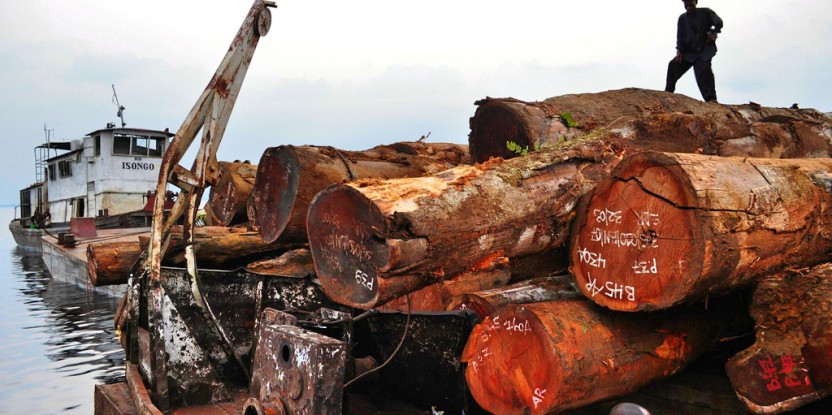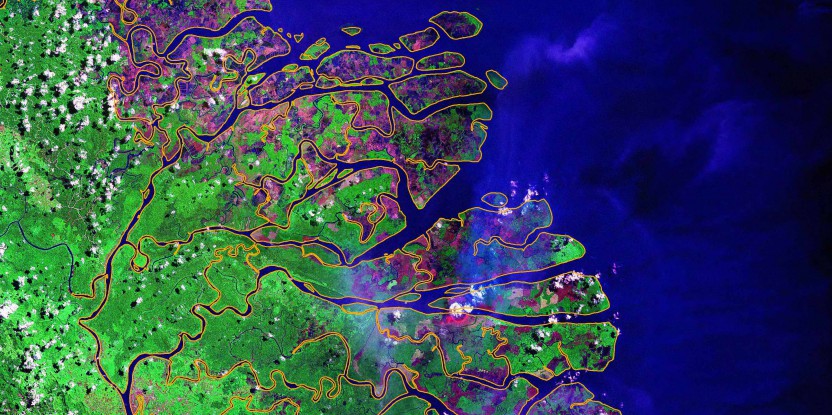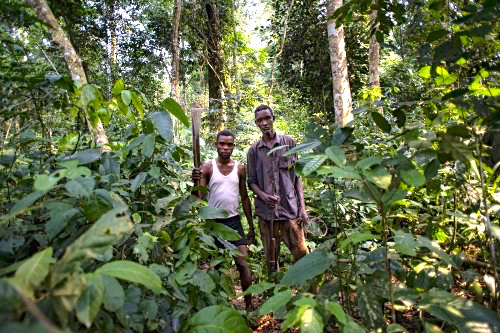The Democratic Republic of Congo (DRC) is home to the second-largest single block of forest in the world, and its forests make up two-thirds of the Congo Basin forest area.
Researchers have often concluded that slash-and-burn agriculture and biomass production are two of the most important causes of deforestation in the country.
Further research indicates that the DRC has the largest area of deforested land in the Congo Basin.
But, according to a new study, undertaken by the Center for International Forestry Research (CIFOR), while agriculture appears to be a main driver, there is a ‘lack of strong evidence’ to support concerns about extensive deforestation in general and about shifting cultivation’s contribution to deforestation in particular.
If you look at the highest estimate for the provinces with the most forest... it is still almost half of Brazil’s, less than half of Indonesia’s, and more than four times less than Malaysia and Paraguay’s
Indeed, the study claims that ‘both the biodiversity and carbon impacts of such deforestation are likely to be limited’.
“Large scale deforestation is unlikely to be caused by shifting cultivation,” says Amy Ickowitz a CIFOR scientist and the study’s lead author. “I don’t think it is happening now and don’t see it happening in the future”.
The authors drew from existing knowledge on the evolution of the DRC’s tree cover and its links to farming practices.
They first reviewed publications based on satellite data, the availability of which has increased since 2008. Those studies used different methods, definitions, and imagery, which made comparing the studies data difficult, so much so that “there is no definitive estimate on either the extent of forest cover in the DRC or the rate of deforestation”.
CONGO FOREST STATISTICS: UP OR DOWN?
Not only did the authors of recent studies have varying definitions of what constitutes “forest” or “deforestation”, they also used different date ranges and methods to analyze satellite images. These variations also proved a challenge for the authors of the study, says Ickowitz.
“You can take a sample of a few points and then extrapolate from those…or you can really look at the entire image, but it is very time consuming and expensive,” she says. “Even when you do that, you need to have a method for classifying the pixels that you see into land uses, and there are different methods to do that.”
As a result, some scientists have concluded that deforestation had increased in the DRC in the first years of this century, while others have found it has decreased.
Some of the research projects benefiting from the widest set of satellite imagery available – Observatoire Satellital des Forêts d’Afrique Centrale (FACET) in Central Africa, and Global Forest Change (GFC) globally– may give a more definitive picture in the coming years.
For the time being, the CIFOR study concludes, “each approach offers different strengths and weaknesses, making selection of any one as closest to ‘truth’ somewhat difficult”.
Moreover, the findings indicate that deforestation in the areas of the country with the largest tracts of primary forests is relatively low when placed in a global context.
“If you look at the highest estimate for the provinces with the most forest, which would be the FACET estimate for Equateur province, it is still almost half of Brazil’s, less than half of Indonesia’s, and more than four times less than Malaysia and Paraguay’s,” Ickowitz says.
The highest deforestation rates were measured around densely populated areas, including the capital Kinshasa, rather than in the impenetrable primary forest.
High population density would likely happen around cities and large towns, not in the heart of the rainforest
The authors also reviewed recent publications studying the links between agriculture and forest loss. They found that there was a consensus from the literature “that small-scale agriculture, mostly in the form of shifting cultivation, is the major contributor to deforestation in the DRC”.
THE POPULATION PROBLEM
Yet very few studies provided “sufficient evidence” to support that claim.
For example, most areas studied were in peri-urban areas, more densely populated than the rest of the country. Also, the time between cycles of shifting cultivation assumed to have once existed in the DRC in an idealized past have not been well documented in the DRC and are unlikely to have been widespread. Thus arguments that they have declined recently due to population growth are difficult to substantiate.
While agriculture does seem to be a main driver of deforestation, the authors concluded that there is little evidence that the methods used by shifting cultivation in rural heavily forested areas are to blame.
Rather, according to Ickowitz, the major cause appears to be agriculture practiced around medium-sized and large cities.
“High population density would likely happen around cities and large towns, not in the heart of the rainforest,” she says. “The only thing that could change that would be better roads that give people access to these remote areas – and even then, I doubt masses of small farmers would move there to practice shifting cultivation.”
In that case, of more roads, commercial agriculture would be more likely to cause deforestation – especially if agricultural intensification policies intended to reduce land use, end up making farming a more profitable business.
This, too, is also a mere “educated guess”, Ickowitz warns.
When it comes to understanding the drivers and the evolution of deforestation in the DRC, the evidence simply is not there yet. The study’s authors argue that while impacts of deforestation on local areas of the DRC must be considered real, overall, according to the available research, the biodiversity and carbon impacts of deforestation will likely be limited.
For more information about deforestation in the Congo, please contact Amy Ickowitz – a.ickowitz@cgiar.org
CIFOR’s research on deforestation in DRC is part of the CGIAR Research Program on Forests, Trees and Agroforestry
We want you to share Forests News content, which is licensed under Creative Commons Attribution-NonCommercial-ShareAlike 4.0 International (CC BY-NC-SA 4.0). This means you are free to redistribute our material for non-commercial purposes. All we ask is that you give Forests News appropriate credit and link to the original Forests News content, indicate if changes were made, and distribute your contributions under the same Creative Commons license. You must notify Forests News if you repost, reprint or reuse our materials by contacting forestsnews@cifor-icraf.org.


